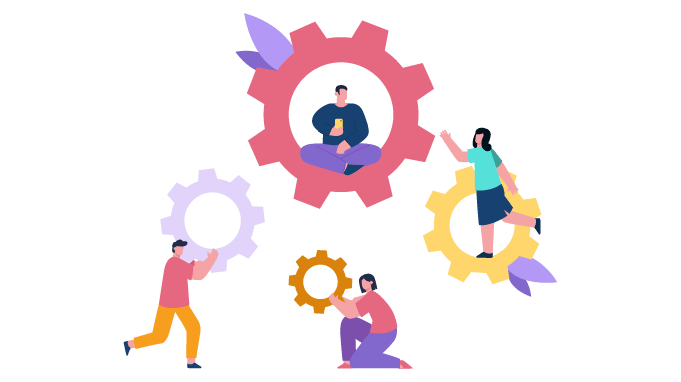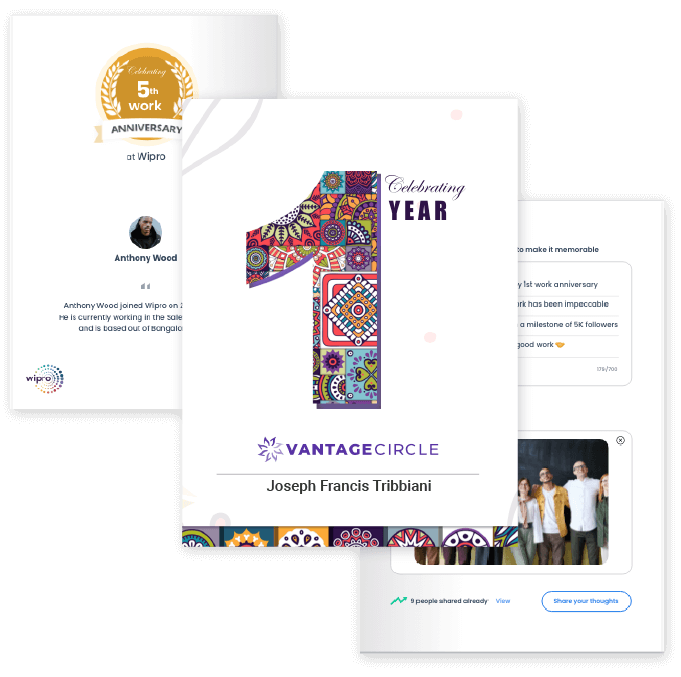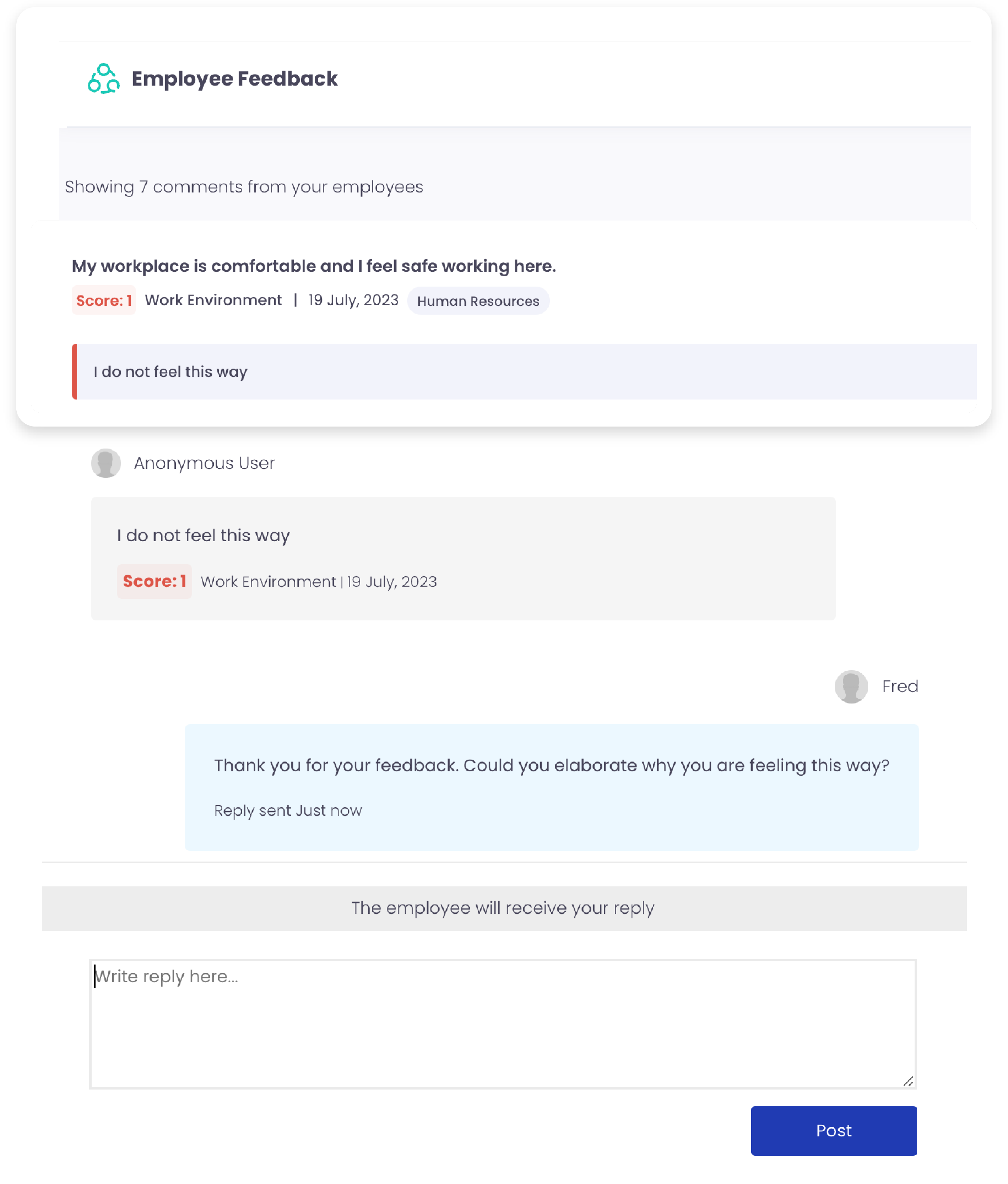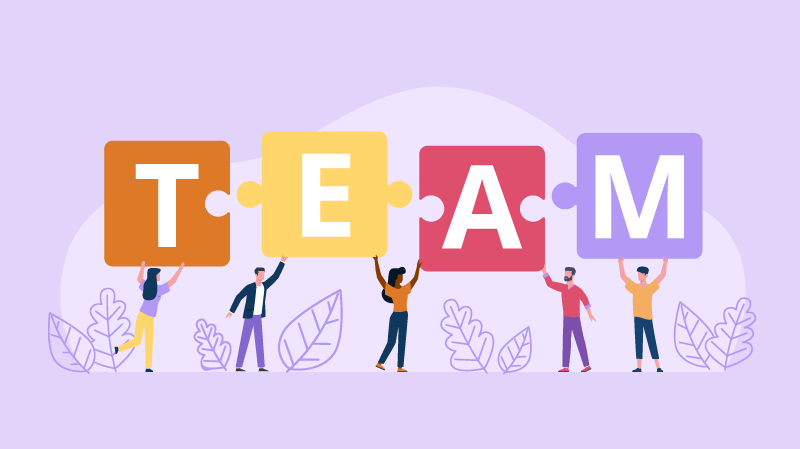Employee Relationship Management: HR's Role, Challenges & Best Practices
"There is little success where there is little laughter." - Andrew Carnegie
Your employees spend the majority of their time at work. A workplace survey by HP in 2017 found that employees spend 56 percent of their time with their “work family” than their natural family. This work-family can thrive only when employees share amicable relationships with each other.
In fact, the same survey also found that the respondents say that having a familial relationship with coworkers boosts productivity and feeling of well-being in the workplace.
Key Takeaways
- Concept of Employee Relationship Management
- Importamce and Benefits of Employee Relationship Management
- Proactive Vs Reactive Employee Relationship Management
- Role of HR in Employee Relationship Management
- Challenges in Employee Relationship Management
- Best Practices of Employee Relationship Management
What Is Employee Relationship Management?

Employee Relationship Management or ERM is the process of managing relationships in an organization. These relationships can be between the organization and employees as well as coworkers working at the same level.
For employees to be productive, they need to have a working environment that allows them to be creative. When employees have an easy-going relationship with others at work, it will show in their performance and productivity. There will be more communication, collaboration, and cooperation.
An effectively managed ERM will pave the way for a fulfilling employee experience and a feeling of satisfaction from the work your employees do.
Why is Employee Relationship Management Important?

Employee Relationship Management (ERM) has become a critical focus area for organizations looking to boost engagement, productivity, and retention.
ERM aims to foster positive relationships between employees, managers, and the overall organization.
When done right, it can benefit both the organization and its employees in multiple ways.
Benefits for the Organization:
- Improved employee engagement and morale: Employees who feel valued and trusted are more motivated to contribute their best. This leads to higher productivity.
- Increased retention: Good relationships make employees want to stick around longer. This reduces turnover costs related to hiring and training new employees.
- Smoother change management: Engaged employees with a good relationship with leadership tend to embrace changes more readily. This makes transformation initiatives easier.
- Enhanced employer brand: A reputation as a great place to work helps attract top talent. It also improves public perception and customer satisfaction.
- Identifying pain points: Open communication inherent in ERM helps surface issues that need to be addressed proactively.
- Stronger collaboration: Good relationships enable employees to work together more effectively as a team. This is key to organizational success.
Benefits for Employees:
- Job satisfaction: Employees who get along well with their team and managers find greater meaning and fulfillment in their work.
- Career development: Managers who invest in their employees' growth open up more advancement opportunities. This allows for acquiring new skills.
- Workplace community: Positive work relationships provide employees with a sense of belonging and a support system. This enhances their well-being.
- Trusted environment: A culture of openness and respect enables employees to voice concerns freely and honestly. They feel valued and heard.
- Leadership guidance: Bonding with managers allows employees to get constructive feedback and coaching. This supports their overall development.
Types of Employee Relationship Management
| Basis | Proactive ERM | Reactive ERM |
|---|---|---|
| Mindset | Focuses on preventing issues before they arise. Aims to build robust relationships proactively. | Addresses issues reactively as they come up. Tries to manage relationships responsively. |
| Approach | Identifies potential issues through surveys, 1-on-1s, etc. Implements practices like mentorship and recognition preemptively. Provides resources like EAPs before problems arise. Fosters open communication and feedback continuously. |
Waits for problems like conflicts or disengagement to become serious. Puts band-aid solutions once issues get bad enough. Provides resources like EAPs before problems arise. Conducts incident investigations after problems occur. Handles employee grievances on a case-by-case basis. |
| Focus | Emphasizes relationship-building and engagement. | Concentrates on fixing specific issues. |
| Impact | Results in higher trust, morale, and productivity. | Leads to lower job satisfaction and higher turnover. |
| Examples | Weekly 1-on-1s, employee appreciation events, training leaders on giving feedback. | Mediating conflicts after they escalate, offboarding interviews after employees quit, and addressing low engagement scores. |
Role of HR in Employee Relationship Management

Human resource management can play an important role in building strong employee relationships. They can conduct activities that allow employees to work with each other as well as managers.
I have divided the ways how hr professionals can improve relationships in the workplace into two sections-
Between Coworkers
Peer relationships, if cultivated properly, can significantly improve your company’s culture. A good relationship builds camaraderie and boosts morale. When teams work together, employees can learn new skills, motivate each other and collaborate. Such a healthy environment encourages employees to perform and achieve their goals.
Here’s how you can improve peer relationships-
1. Build Cross-Functional Teams (CFT)
Cross-functional teams span across organizational boundaries. CFTs allow employees from different departments to combine their skills and work towards a common goal.
Building such teams can allow people from diverse departments who have never worked together to get to know each other. Moreover, when people with different skills work on a project together, problem-solving becomes efficient. When you club together people who are experts in different domains, new and innovative ideas will emerge.
When people work together, they can let go of their presumptions and understand each other’s perspectives. It allows them to see how their team members arrive at a conclusion and their thought process. It makes them more understanding and accepting of each other.
(Related: The Rise and Importance of Cross Functional Teams )
2. Encourage Social Interactions
The best way to get people to interact with each other is through food. At Vantage Circle, we celebrate all major company milestones with mandatory team lunches.
If you think about it, it’s extraordinary that employees come to work every day, work at the same space but rarely talk to each other. At large corporations, people usually keep to themselves. Even during lunch breaks, they eat at their respective desks, scrolling through their phones, watching videos, etc.
To ensure that employees don’t remain as strangers, you can organize team lunches and potlucks. These events can be great opportunities for people to network with people from other groups.
Additionally, you can encourage your employees to exchange gifts on Valentine's Day, Christmas, and other special occasions. Creating a relaxed and cordial environment of this kind can even give rise to friendships and strong bonds among coworkers.
3. Conduct Team Building Activities
The benefits of conducting team building activities are endless. It makes communication among employees more frequent, improves problem-solving and decision-making skills. Team building activities like a spirit week celebration can also effectively add a pinch of fun and laughter in the workplace.
Most importantly, team building activities build and strengthen relationships. When teams collaborate, it paves the way for trust to be built, exchange ideas and opinions. Mostly, it is about sharing and combining knowledge and experience to reach goals.
4. Equip them with Communication Tools
For relationships to form and sustain, employees need to communicate with each other. Lack of communication can cause misunderstandings and as a result, give rise to conflicts.
With the influence and immediacy of technology in the present age, the need to always stay connected is paramount. Workplaces too need to equip themselves similarly.
Empowering employees with communication tools is a great way to ensure that employees can always share important information with each other. Cloud-based messaging tools like Skype, Slack allow people to share messages, pictures and files from anywhere around the world at any time. Therefore, with new-age communication tools, you can effectively strengthen relationships between your remote workers too.
Between the Manager and the Employee
Employees often hesitate before sharing information with their managers because they’re always worried about how it’s going to reflect on their performance review. But managers who can merge the gap between them and their employees without being too friendly or too authoritative will build lasting relationships with their employees.
1) Hold 1:1 Meetings
Different from a feedback or appraisal meeting, a 1-1 meeting is a face-to-face interaction between the manager and the employee. These meetings are pre-decided and held with every individual in the organization. In these meetings, the employee can discuss anything- new ideas, issues, concerns- with the manager.
Managers play a crucial role when it comes to conducting these meetings. Once you have made time in your calendar to hold a 1-1 with an employee, how your relationship progresses from there depends a lot on you.
First, they must create an environment where employees feel comfortable enough to share their concerns and issues with them.
Secondly, once the employee starts sharing his concerns, the manager must be rational and open-minded while listening and trying to resolve the situation. When the employee sees that you were accepting of their ideas or concerns, they’ll want to come back to you to share. This will build trust and deepen your bond with your employees.
2) Conduct Surveys to Understand how Employees Feel
Working in this industry, we often hear executives and CEOs complaining about how their employees aren’t engaged, their turnover is too high and so on. But instead of trying to find out why the employees aren’t satisfied, companies try to load them with meaningless, etc.
You might be providing employees with great insurance plans but maybe what they really want is a work from home policy. The only way to know this is by conducting surveys.
Surveys like engagement surveys, 360-degree surveys enable the organization to understand the needs of the organization. Once you know where you are lacking, you can work on rectifying and providing feasible solutions to your employees.
The result of holding these surveys will be that your workforce will feel that you genuinely care about their needs and requirements. This will build trust, loyalty, improve your branding and strengthen the overall relationship you have with your employees.
3) Transparency and Involvement Must go Hand-in-Hand
One of the worst things you can do as a manager is keeping your employees in the dark. Just like your partner, your employees will never have a trusting relationship with you if they feel you are hiding things from them. Therefore, always be clear and transparent with your actions and the decisions you make. Let everyone know what’s going on in the company, what changes have been adopted, how much the company makes and so on.
Another very important pointer for your employee relationship management is involving employees. When you favor a handful of employees, share information only with them and try to include them in all decision-making processes, others take notice. And it’s only natural that they feel offended by it.
Therefore, to maintain a fair and unbiased work environment, include everyone in your discussions. Give everyone the opportunity to share their ideas and express their opinions.
Challenges in Employee Relationship Management

Positive employee relations are the bedrock of a thriving organizational culture. However, even the best-intentioned companies face hurdles in nurturing engagement and trust across the workforce. By recognizing and mitigating these pitfalls, HR leaders can enhance communication, satisfaction, and productivity.
Aligning with Employee Expectations
Companies often focus heavily on tasks, deliverables, and short-term goals. This can result in neglecting employees' needs for career growth, work-life balance, and flexibility.
When organizations disregard opportunities for employee development, it makes employees feel undervalued. This causes them to disengage and erodes workplace relationships.
Companies must prioritize understanding employee expectations through regular surveys and one-on-one conversations to foster meaningful connections. They need to take sincere action to meet those needs, whether it is through training programs, flex schedules, or new roles.
Minimizing Subjective Assessments
Biased performance reviews and feedback impacted by recency bias, prejudice, and the halo effect distort performance management. When reviews are skewed, employees lose trust in the process.
Implementing structured frameworks for performance evaluation that increase objectivity and focus on actual work delivered sustains healthy working relationships. Reviews should provide balanced feedback on accomplishments and areas for improvement and use performance metrics that apply equitably across employees.
Navigating a Diverse Workforce
With globalization, companies today encompass employees from diverse cultural, generational, ethnic, and socioeconomic backgrounds. Failing to be sensitive to varying communication styles, workplace expectations, and needs within this context strains working relationships and engenders exclusion.
Voluntary diversity training coupled with proactive initiatives around equitable inclusion, accessibility, and cultural celebrations can help bridge divides. Additionally, anti-discrimination policies and diversity goals can empower underrepresented groups.
Connecting Remote Employees
Virtual and hybrid work models disrupt organic relationship-building and cultural osmosis between employees. They reduce opportunities for spontaneous interactions, oversight, and camaraderie-building. This poses challenges for remote managers in connecting dispersed teams.
Using collaborative technology paired with inclusive online social events and activities provides the essential touchpoints to humanize distributed teams. Remote workers should be equally included in organizational initiatives, communications, and social gatherings to mitigate isolation.
Adapting Amidst Rapid Change
Constant organizational change via restructuring, expansions, leadership transitions, etc., causes uncertainty and disrupts relationships as adjustments occur. Similarly, leaders' lack of transparency and engagement during ongoing changes makes employees feel unsure about shifting expectations, roles, and reporting structures. This erodes trust.
Proactive communication addressing concerns, gaining input into changes, and explaining the rationale behind transitions can reduce employee anxiety. Leaders should focus on bringing employees along to sustain a positive culture.
Overcoming Technological Barriers
Technologies like automation, artificial intelligence, and predictive analytics provide operational efficiencies. However, leveraging them without thoughtfully managing organizational impact can dehumanize workflows.
Technology should enhance, not replace, human connection. If employees feel distrusted or monitored by tech-like tracking tools, it damages psychological safety. That is where communicating the intent behind using the new technology becomes paramount.
Additionally, lack of training and support in using new tools leaves some employees behind, disrupting work and collaboration. Change management paired with contextual learning in using technology in an empowering, relationship-centered manner is the key to helping employees overcome technological barriers.
Combating High Turnover
Frequent attrition severs bonds between employees while lowering morale and engagement. Exit interviews, stay interviews, pulse surveys, and HR analytics help identify drivers of turnover, such as inadequate compensation, lack of development, poor cultural fit, ineffective managers, or toxic environments.
Improving onboarding, manager training, mentorship programs, and general work conditions boosts retention. Strong relationships anchored in trust and satisfaction incentivize employees to persist.
Best Practices of Employee Relationship Management

Open Communication
Effective communication is the lifeline of healthy employee relationships. Organizations must establish open channels for ongoing two-way communication across all levels. Provide multiple platforms like instant messaging, intranets, and social tools to facilitate transparency.
Actively seek employee voice through regular surveys, focus groups, townhalls, and mentoring circles. This gives people ample opportunity to express their thoughts, concerns, and ideas. When employees feel heard, engagement and trust flourish.
According to Forbes, employees who sense their voice is heard are 4.6x more likely to experience a sense of empowerment, propelling them to achieve optimal performance.
Dispute Resolution
Unresolved conflicts breed resentment and dysfunction. To maintain workplace harmony, organizations need clear dispute resolution policies that employees trust. Institute streamlined mechanisms for addressing disputes promptly and objectively, whether between coworkers or with managers.
Train leaders on conflict mediation. Resolving tensions quickly before they spiral prevents a detrimental impact on morale and performance. An ounce of preemptive conflict management saves tons of firefighting down the road.
Recognition
Make recognition a regular ritual to reinforce positive behaviors. Celebrate achievements big and small, from completed projects to work anniversaries. You may also publicly shout-out to exemplary performers or send personalized congratulatory notes. A simple “thank you” goes a long way too.
Studies show consistent recognition boosts motivation, loyalty, and job satisfaction. Employees work harder when their efforts don’t go unnoticed. A culture of appreciation makes the workplace more rewarding.
Companies can achieve this by investing in simple-to-use rewards and recognition solutions. We highly recommend Vantage Rewards since it is perfect for those organizations who want an accessible and fast platform for their busy workforces.
The Vantage Rewards platform offers extensive customization options and incredible features such as the AI-powered 'Service Yearbook'.

Source: Vantage Circle
The AI-powered Service Yearbook incorporates a cutting-edge predictive text feature to simplify the process of composing messages. It enables employees to gather and share memories, including photos, in a customized online yearbook format to celebrate their colleagues' work anniversaries.
Training and Development
Invest in developing your people even if they won’t be with your organization forever. Offer training programs, mentoring opportunities, and stretch assignments to help employees gain new skills.
Sponsor external conferences and courses relevant to their growth. This shows you’re serious about their personal progression. Your investment pays off in the form of a more capable, engaged workforce. Even if they move on, your organization’s employer brand benefits.
Feedback Process
Constructive feedback is a precious gift. Institute consistent check-ins where managers and employees provide each other with balanced feedback. This enables continuous improvement by highlighting strengths and growth areas objectively. The key is making feedback a regular ritual rather than an annual anxiety-inducing event.
Maintain a culture of respectful dialogue where people give and receive feedback comfortably, without fear of retaliation. The one-on-one meeting is the ideal channel for honest developmental discussions.
This is where investing your money and resources into something that we call the employee pulse surveys become important. With tools like Vantage Pulse, you can leverage the e-NPS based survey to actively listen to your employees' feedback and gauge their satisfaction levels.

Source: Vantage Circle
Finally
Healthy employee relationships are the foundation of a thriving organizational culture. By investing in open communication, dispute resolution, recognition, training, and feedback, companies can foster trust, engagement, and collaboration.
Effective employee relationship management comes down to understanding your people and meeting their needs proactively. Building a workplace where they feel valued, supported, and empowered to do their best work is important. When employees feel genuinely cared for, they care more, resulting in higher loyalty, productivity, and performance.

















